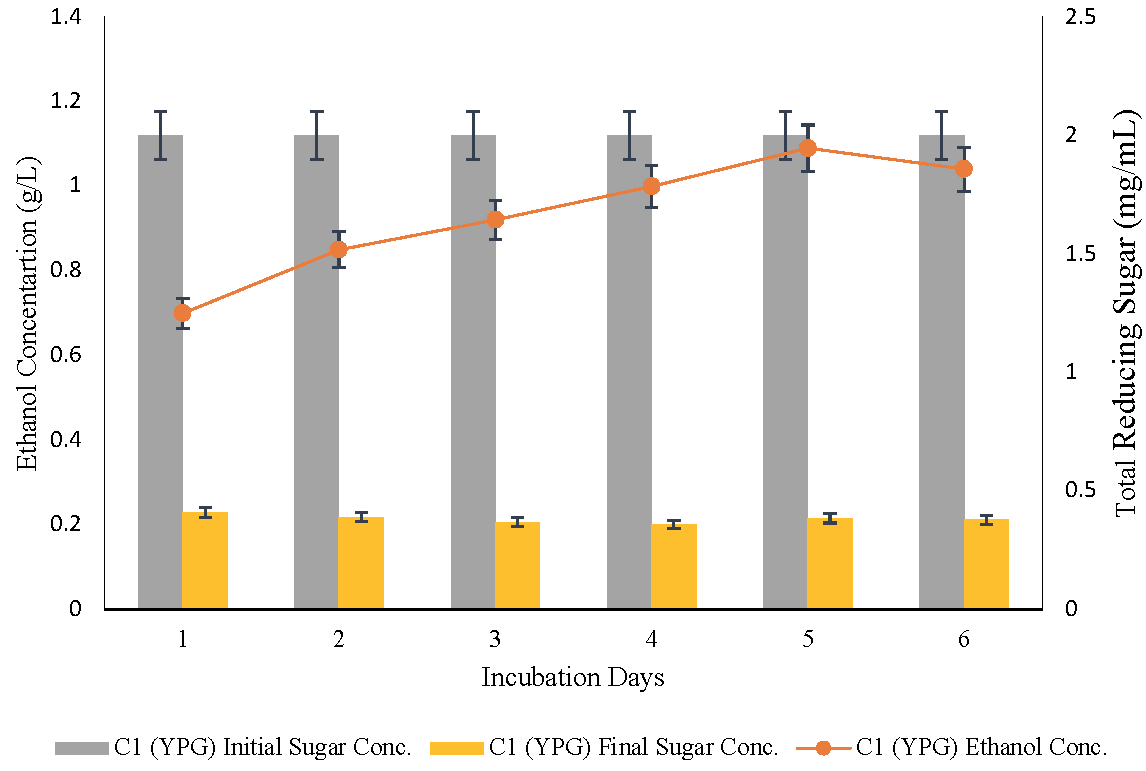 |
|
Snowballing levels of greenhouse gas emissions and concerns about climate change has led to an ongoing exploration of biofuels. Bioethanol can be obtained from wheat straw and can be readily available as clean fuel for combustion engines. Therefore, Wickerhamomyces anomalus yeast strain IHZ-26 was used to produce bioethanol from sugar solution obtained from enzymatic hydrolysis of wheat straw. Nineteen different fermentation media were used for this purpose in which carbon source employed was sugar solution obtained from enzymatic hydrolysis of wheat straw. Out of which, maximum bioethanol yield (1.09 g/L; p <0.05) was observed in ‘C1 Yeast extract, peptone, glucose’ medium. After optimization of different cultural parameters, surface culture fermentation for 5 days at 25℃ gave maximum results using 2, 1.5 and 2 g of glucose, xylose and ammonium dihydrogen phosphate, respectively. Four hours old inoculum of yeast in a concentration of 3.5% was optimized for maximum bioethanol yield. These optimized parameters resulted in augmented bioethanol production (5.0g/L) by 5.02 folds. This study revelas that W. anomalus IHZ-26 employed was able to covert pentose and hexose sugars simultaneously with efficient ethanol yield.
Keywords: Bioethanol, Pichia anomala, Optimization, Fermentation.
|
|
 |

